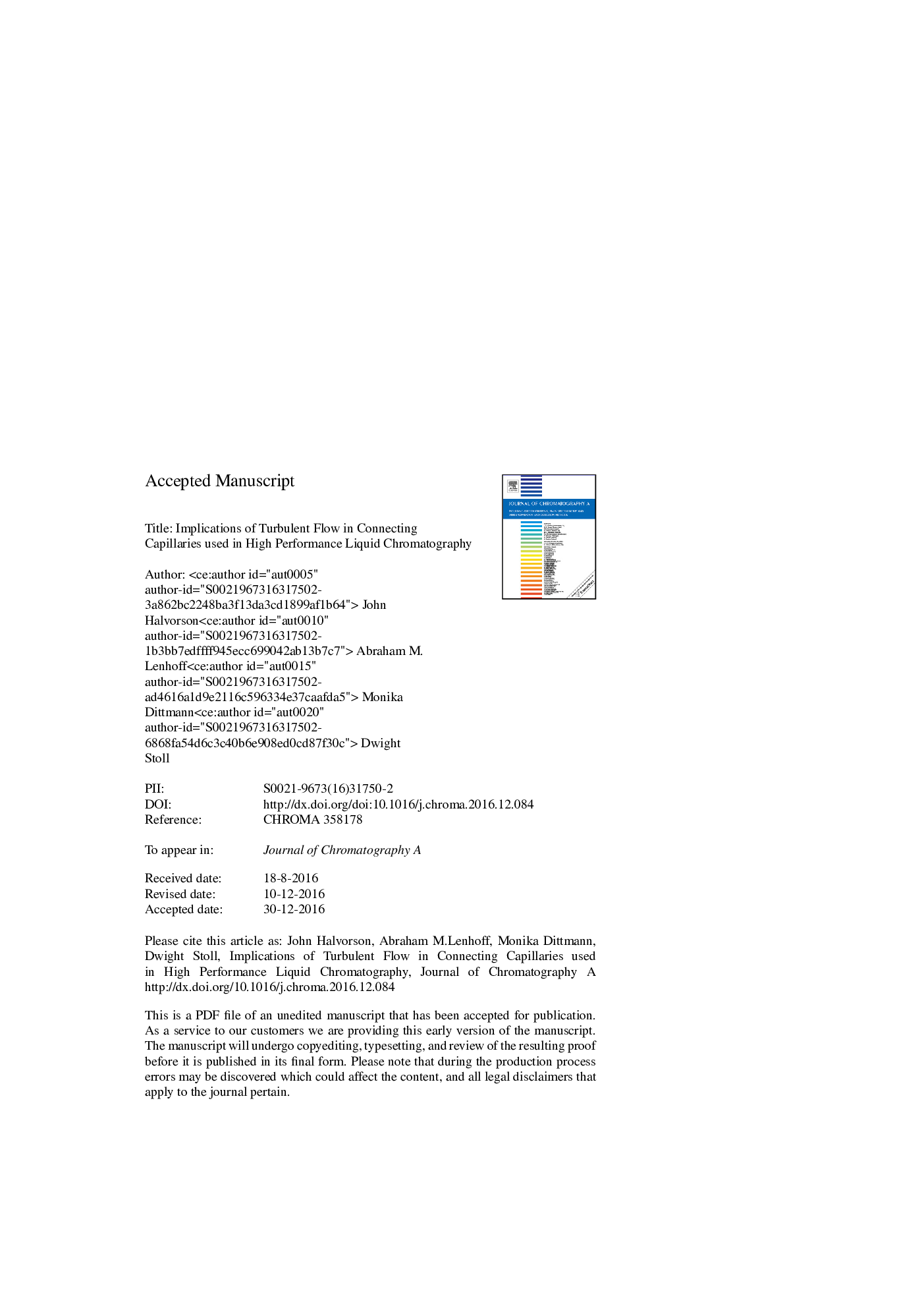| کد مقاله | کد نشریه | سال انتشار | مقاله انگلیسی | نسخه تمام متن |
|---|---|---|---|---|
| 7608918 | 1493390 | 2018 | 28 صفحه PDF | دانلود رایگان |
عنوان انگلیسی مقاله ISI
Implications of turbulent flow in connecting capillaries used in high performance liquid chromatography
ترجمه فارسی عنوان
پیامدهای جریان آشفته در اتصال مویرگها که در کروماتوگرافی مایع با کارایی بالا استفاده می شود
دانلود مقاله + سفارش ترجمه
دانلود مقاله ISI انگلیسی
رایگان برای ایرانیان
کلمات کلیدی
موی سر فولاد ضد زنگ، سیلیس فروخته شده جریان آشفته پراکندگی اضافی ستون، کروماتوگرافی مایع
موضوعات مرتبط
مهندسی و علوم پایه
شیمی
شیمی آنالیزی یا شیمی تجزیه
چکیده انگلیسی
The ongoing movement in HPLC toward the use of small columns packed with small particles for high speed separations results in eluted peaks with very small volumetric variances. Avoiding degradation of separation performance under these conditions requires careful consideration of all sources of extra-column peak dispersion. Recent trends towards decreased diameters of connecting capillaries and increased flow rates for analytical-scale separations can result in Reynolds numbers that exceed 2000. This raises the possibility of a transition from laminar to turbulent flow, thereby resulting in a higher than expected pressure drop across the capillary at a given flow rate. In this study we collected pressure drop data as a function of flow rate under many conditions relevant to modern HPLC. The variables studied included capillary diameter (50-120 μm) and length (100-550 mm), acetonitrile/water composition (0-100%), and temperature (20-80 °C). Most of the work involved stainless steel capillaries, but a subset of experiments involved fused silica. We then used the experimental data to train a model that enables prediction of pressure drops for all of the conditions studied. We find that a single global friction factor profile is sufficient to predict pressure drops as a function of flow rate that are in qualitative agreement with the experimental results. The quantitative accuracy of these predictions is generally quite good, with a mean prediction error of about 2% over the entire range of conditions studied. Predictions for some outlying capillaries are not as good, with errors as high as â40%. This variability is probably due mainly to capillary-to-capillary variability, especially in the wall roughness, which is difficult to characterize definitively. We believe the model described here will be very useful to practicing chromatographers for predicting the conditions under which turbulent flow might develop in their connecting capillaries, and the magnitude of the pressure drop increase over that expected if flow were exclusively laminar.
ناشر
Database: Elsevier - ScienceDirect (ساینس دایرکت)
Journal: Journal of Chromatography A - Volume 1536, 9 February 2018, Pages 185-194
Journal: Journal of Chromatography A - Volume 1536, 9 February 2018, Pages 185-194
نویسندگان
John Halvorson, Abraham M. Lenhoff, Monika Dittmann, Dwight R. Stoll,
